Stem types and sizes explained. 🙂
TL/DR
There are two major stem types: threadless (“ahead”), and quill stems.
Each stem has two major dimensions: handlebar attachment diameter, and the fork steering column attachment diameter.
In this article I’ve explained what’s what and how to measure it (in case you need to buy a new stem).
0. Introduction
This post explains stem size standards in terms of steering column attachment and handlebar attachment at the opposite end of the stem. Other dimensions, such as stem length and angle will be explained in a separate post.
A tip:
When buying a stem, unless you already have handlebars of a different standard, I recommend you choose a stem with a modern OS (“oversized”) bar attachment diameter (table 1 lists the standard dimensions).
Dimensions and type of steering column attachment depend on your bike’s fork, so that’s a bit harder to “change” – though, if choosing a frame, I recommend you look for one with a 1 1/8″ steering column diameter and a threadless fork – for several reasons.
1. Types of stems
There are two types of stems (in terms of standard attachment dimension): quill (for threaded forks) and threadless (a.k.a. ahead) stems (for threadless forks).
1.1. Quill stem
Quill stem is attached to the steering column by inserting it into the steering column and tightening a bolt on top of the stem, that pulls the quill upwards, making the lower stem diameter wider. Without much going into details and various designs, the basic principle is shown in picture 1.
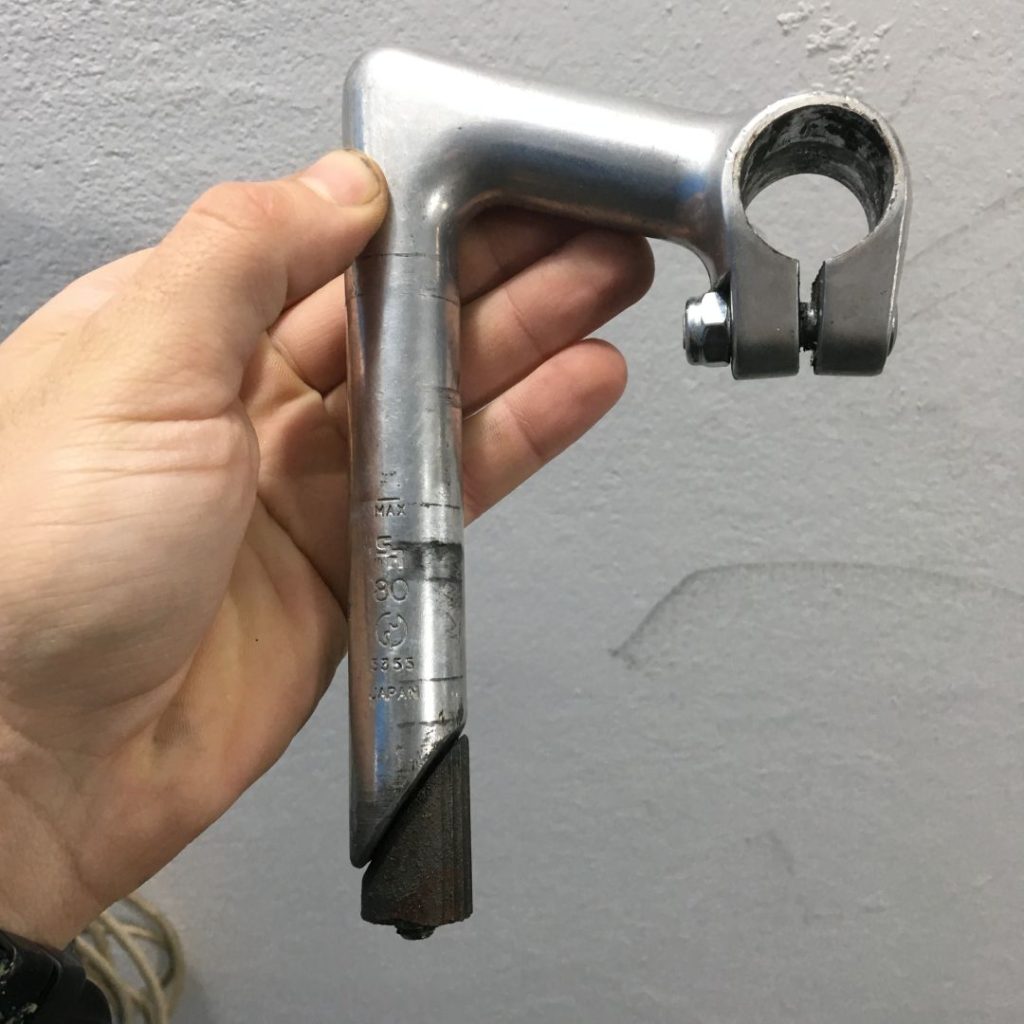
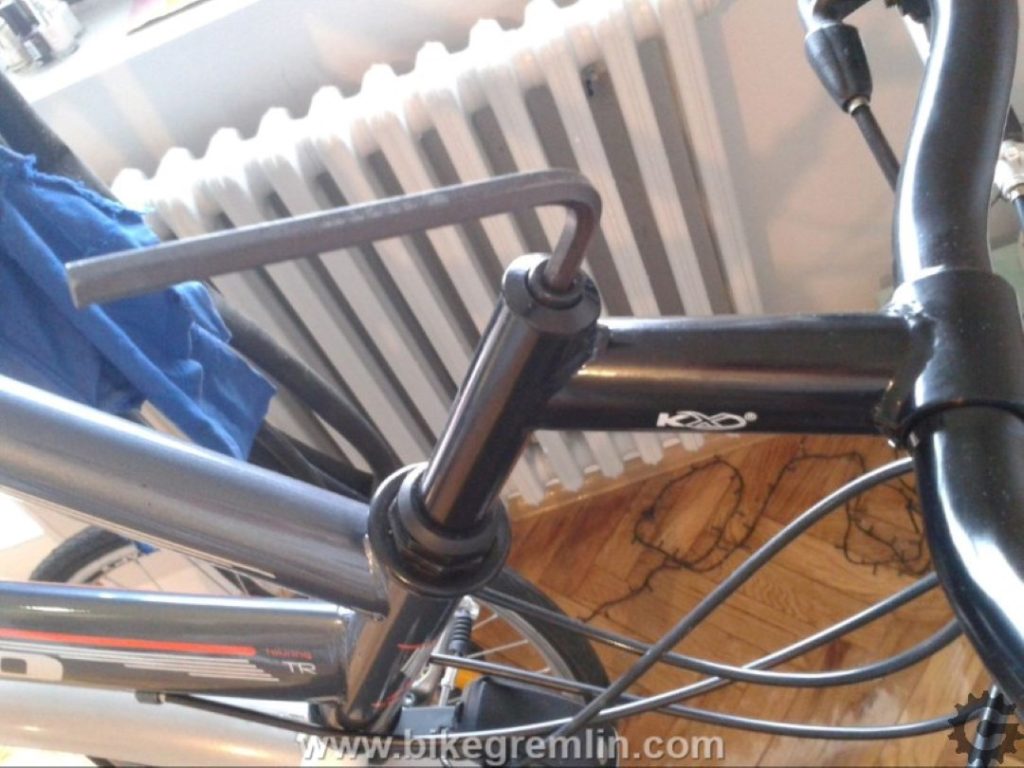
1.2. Threadless stem
Threadless stems have a slot at the steering column attachment end. It is fastened by sliding it onto the steering column, and then tightening the pinch bolt(s) that hold it fastened.
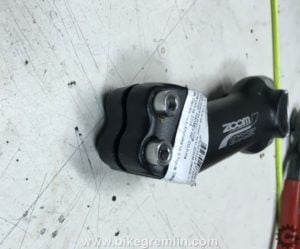
Picture 2
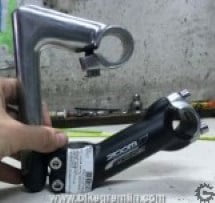
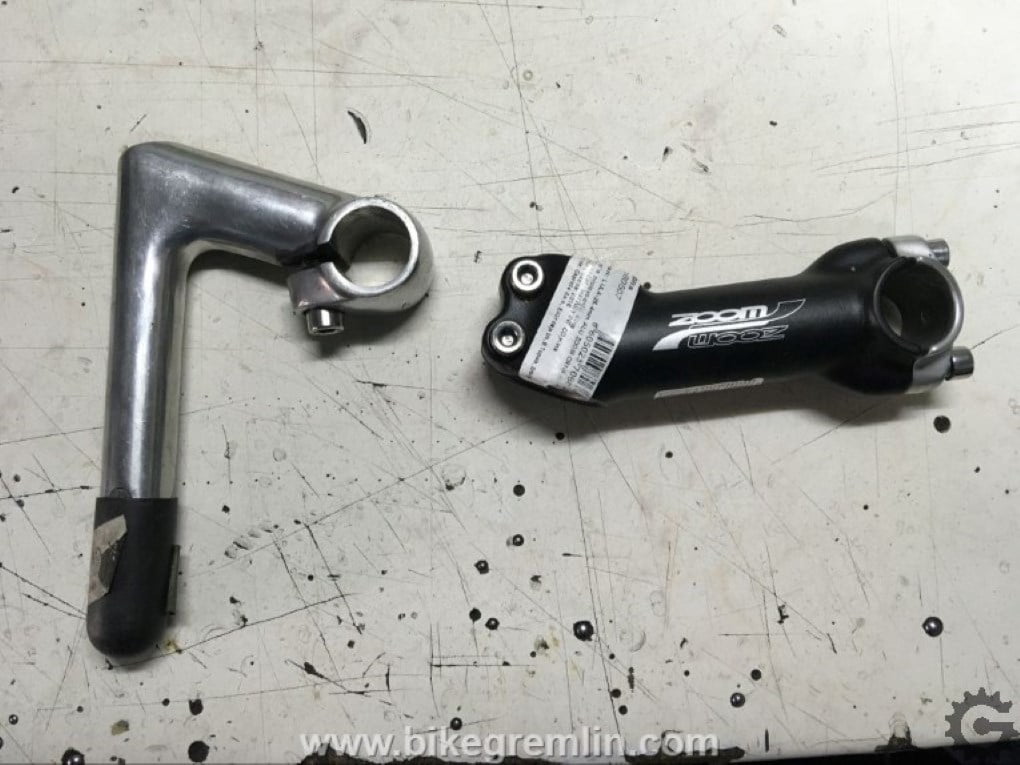
2. Important dimensions and how to measure
Stems are made with various lengths and angles. Picture 2a shows a quill stem with a shorter neck, angled downwards, next to a threadless stem with a longer neck. Lenghts and angles differ and are important when fitting a bicycle to suit a rider. However, in terms of (attachment) standards, important dimensions are the handlebar attachment diameter and steering column attachment diameter.
2.1. Handlebar (clamp) attachment diameter
This dimension is measured practically identically for all the stems. The name says what it is. Measurement method is shown in picture 3.
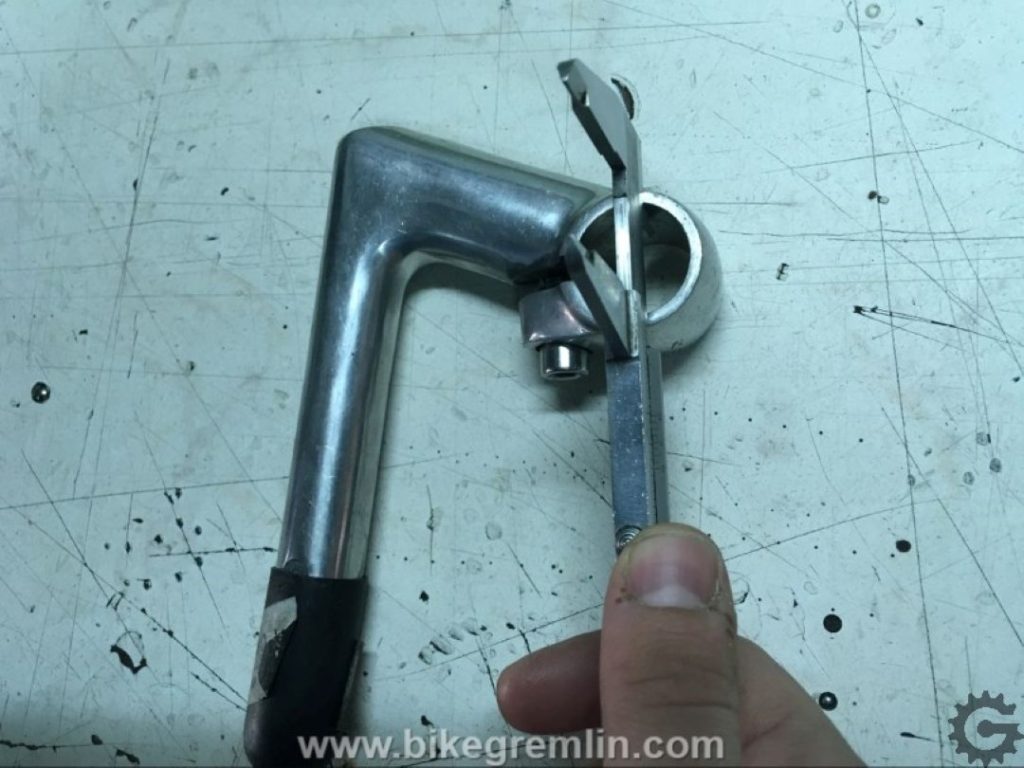
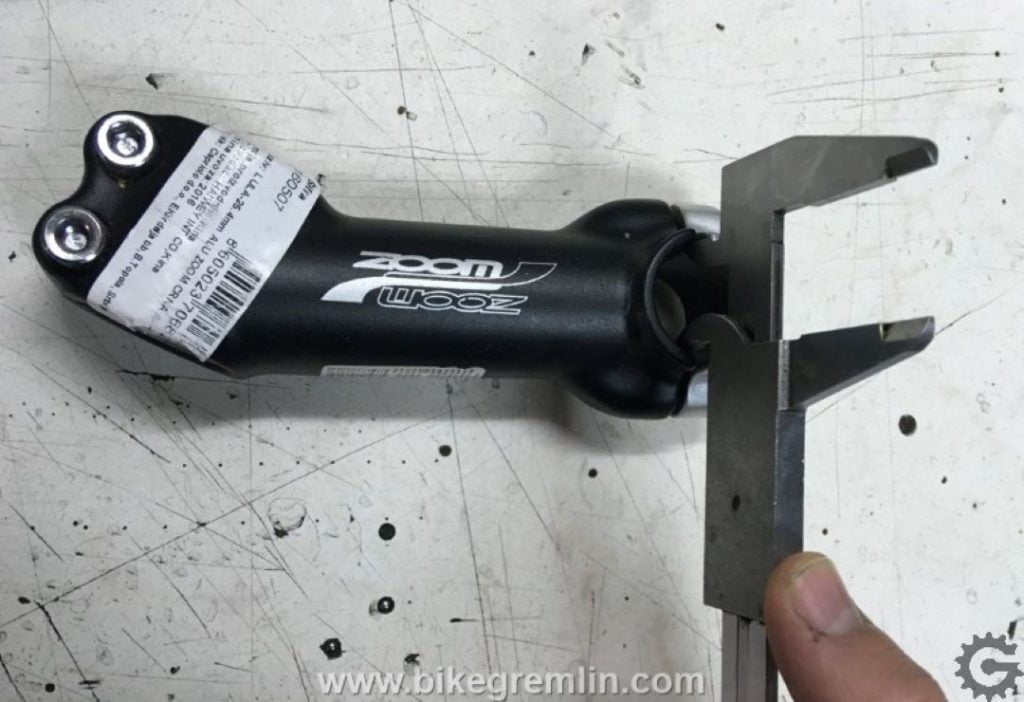
Picture 3b doesn’t show clearly enough, but the calipers are placed at the inner side of the black part of the stem, just near the slit – there would be no use measuring at the slit itself, of course.
One could also measure the (outer) bar diameter (at the stem attachment point) – if a new stem is sought to match the bars.
2.2. Steering column attachment diameter
For threadless stems, this is measured the same as the handlebar attachment diameter. Picture 4 says it all.
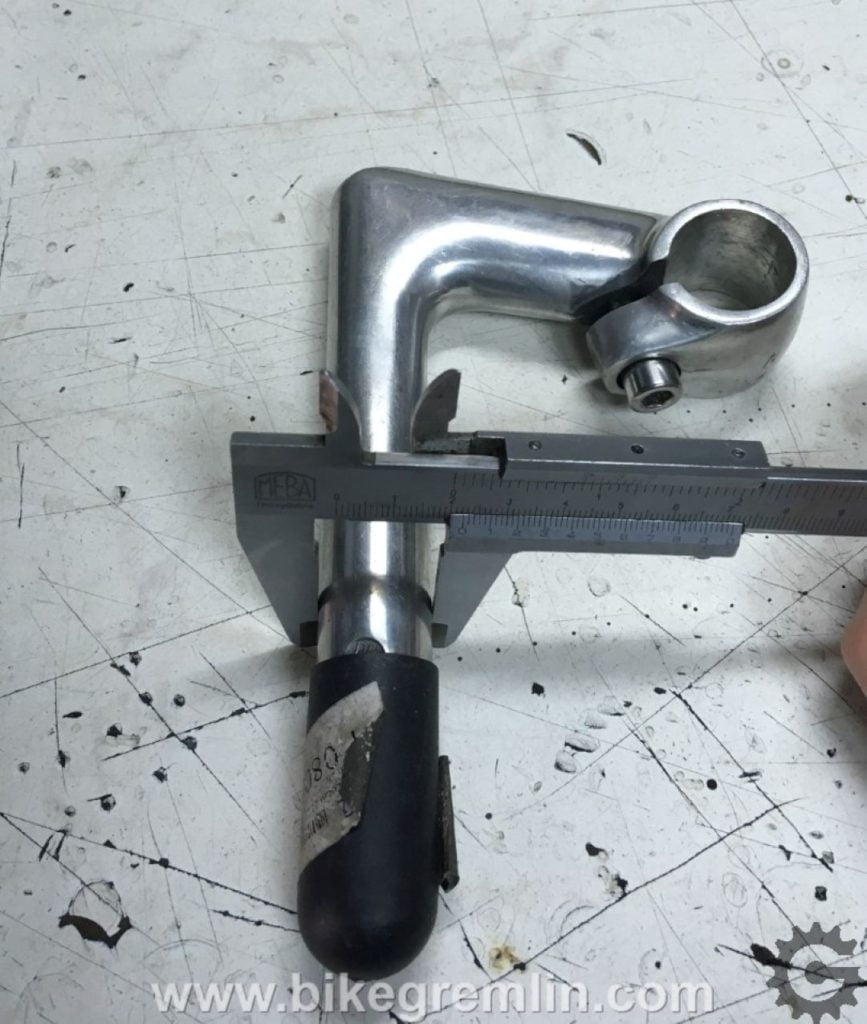
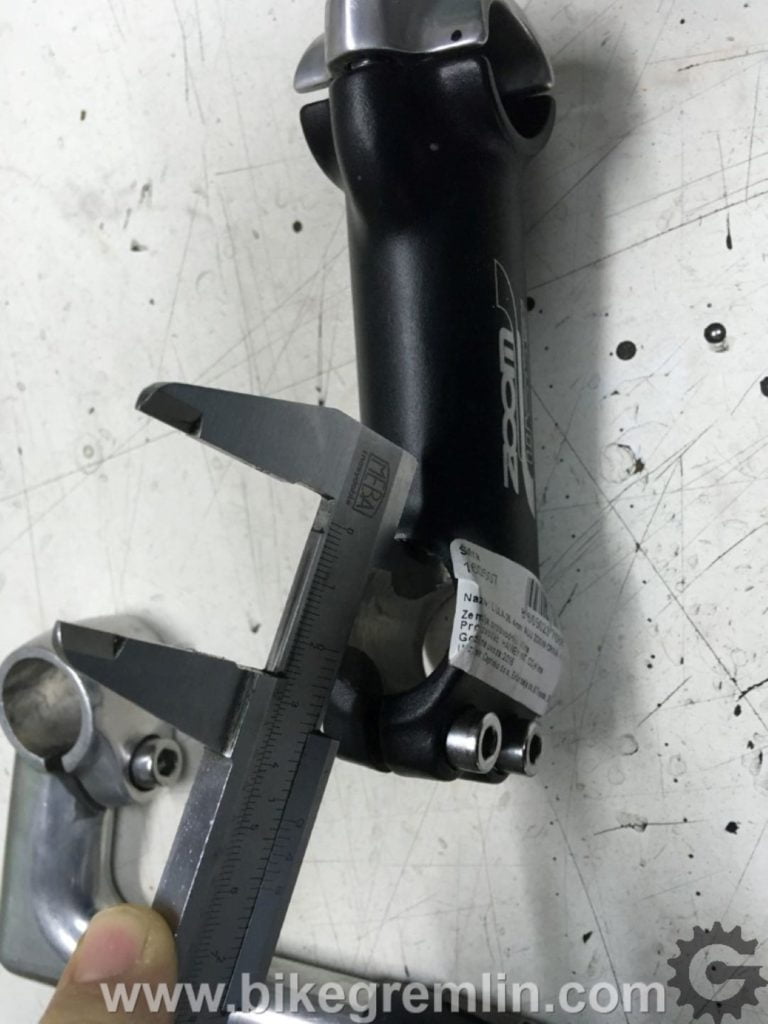
Of course, if a new stem is sought for a fork at hand, then the fork is measured. Picture 5 shows how.
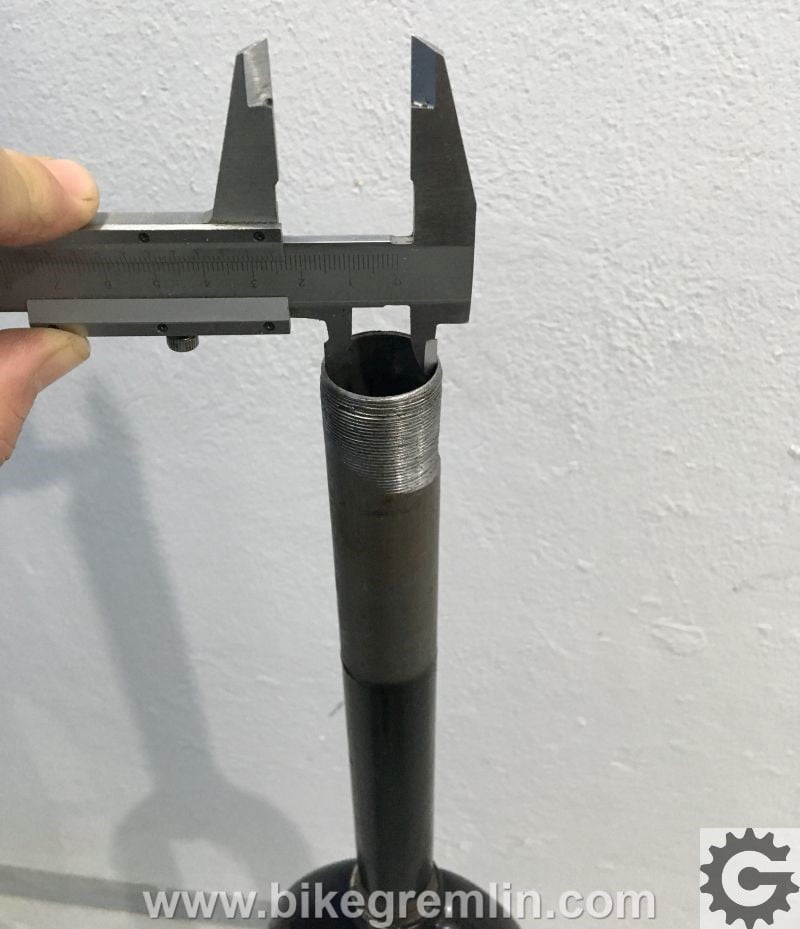
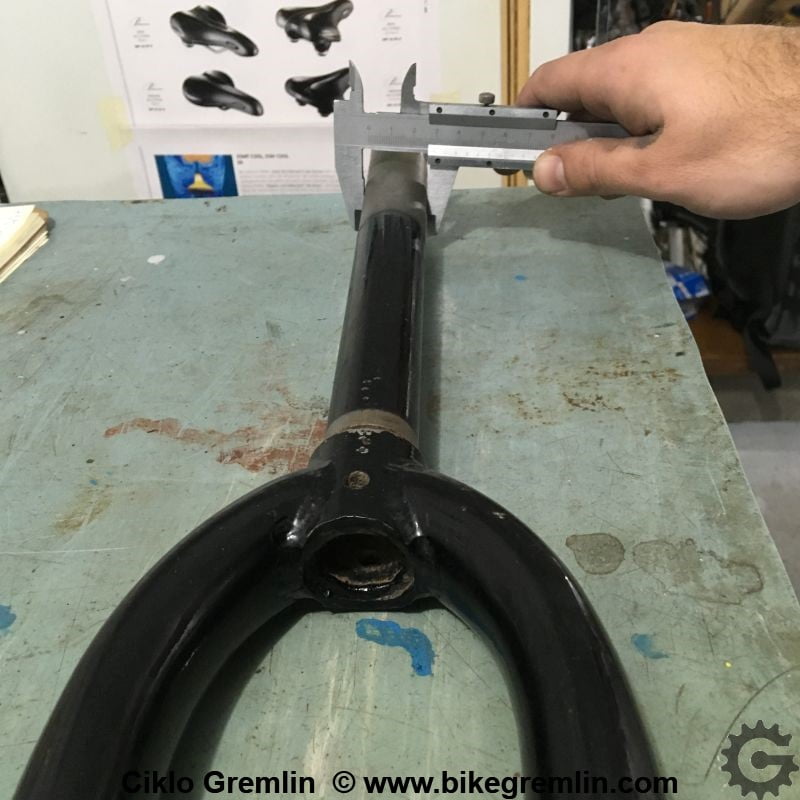
3. Stem dimension standards
After dimensions were defined and their measurement explained, now an overview of the standard dimensions will be given. First table will show bar attachment diameter standard. Second table will show threadless stems for attachment diameters. While the third one will show that for the quill stems.
3.1. Handlebar clamp dimension standards
| TABLE 1 | |
| Handlebar attachment diameter – measurement units: mm (inches) | Standard name |
| 22.2 (7/8″) | for steel bars of old MTB and BMX bikes |
| 23.8 (15/16″) | Obsolete British standard common on old British 3-speeds |
| 25 | Obsolete French standard |
| 25.4 (1″) | Standard ISO size, common for bars from the end of the 20th century |
| 26 | Italian road bike (and bar) standard. Obsolete |
| 27 | Titan – obsolete standard |
| 31.7 – 31.8 – depending on how manufacturers round down the inch dimension which is (1 1/4″) | Modern “oversized” standard |
| 35 (1 3/8″) | Easton standard |
3.2. Steering column attachment dimension standards
3.2.1. Threaded stems (quill stems)
| TABLE 2 | |
| Stem “neck” outer diameter – measurement units: mm (inches) | Standard name |
| 21.15 (13/16″) | Old American and BMX standard |
| 22 | Old French standard |
| 22.2 (7/8″) | Standard for most threaded forks with an outer diameter of 25.4 mm (1″) |
| 25.4 (1″) | Standard for most threaded forks with an outer diameter of 28.6 mm (1 1/8″) – not very common |
3.2.2. Threadless stems
| TABLE 3 | |
| Steering column outer diameter (and inner diameter for the attachment on the stem) | Standard name |
| measurement units: mm (inches) | |
| 25.4 (1″) | One inch standard |
| 28.6 (1 1/8″) | 1-1/8 inch standard |
| 31.8 (1 1/4″) | 1-1/4 inch standard |
| 38.1 (1 1/2″) | 1-1/2 inch standard |
Related post – Bicycle handlebar dimension standards:

Last updated:
Originally published:
The existing comments posted under this article (questions and answers) have been moved to this BikeGremlin forum thread:
https://www.bikegremlin.net/threads/bicycle-stem-size-standards-article-comments.137/

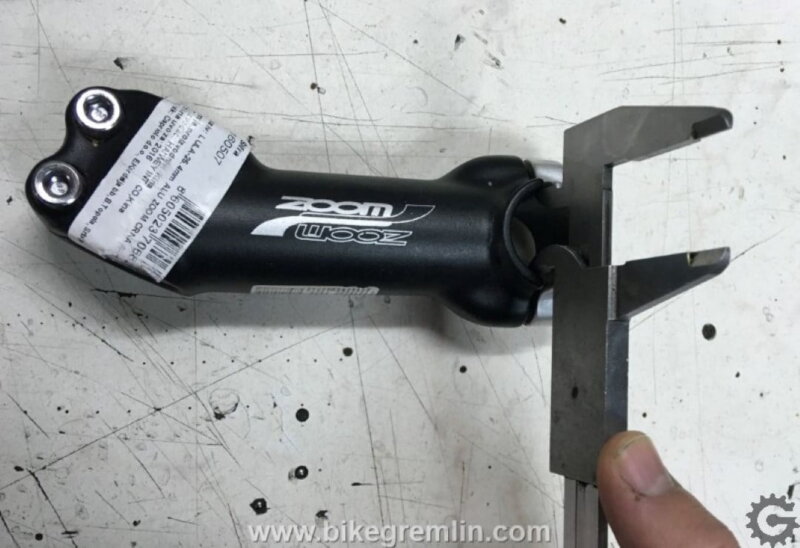
Thank you, it seems like I’ve never gotten a tutorial about stem bikes as clearly as this
Thank you so much! This helped me a lot to buy a replacement part.
i am looking to replace a bent bracket on a Diamond back BMX mini bike. It looks like it has a threadedless stem which is 7/8 OD by 6 inches long question I have is how to ensure that the top part which is a welded bottom plate to stem with top clamp for handle bar and for bolts will be correct when ordering since sites don’t show that dimension
I am looking for a handle bar or a substitute handlebar clamp. I have a restored single speed bike from the 1970’s. The handlebars were way uncomfortable as they wrapped around. the handlebar clamp attaches with a very long screw into the stem. The circumference of the area on the handlebar were the clamp would be is 3 inches. Diameter is just under 0.95 of an inch (24.254895017319mm). Is there a larger handlebar clamp out there? Should I just buy a new stem and if so what size stem? Can I buy a stem that will fit the bike and fit the more standard size mountain bike style handlebars?
Give me the metric system, or give me death!
🙂
This article lists all the standards.
I’m not sure what kind of stem that is, but guess it’s a quill stem.
Measure the diameter as shown in picture 4a.
If it’s 22.2 mm, then it’s relatively common nowadays and finding one that has handlebar clamp for 25.4 mm (1″) should be relatively easy and they are quite cheap.
Finding one for more modern, “oversized” handlebars (1 1/4″), is not as simple, but there still are 25.4 mm bars available (at least in Serbia).
24.25 mm is something I haven’t seen (or at least measured). Not sure where I’d look for bars that fit such stem.
Hi,
I am looking to buy an adjustable stem for my Himiway E bike. The person from the company (in China -so there is probably a language issue), gave me some measurements or specs that comes stock on my present bike, but they do not make sense to me. Maybe you can help, and thank you in advance! This shouldn’t be this difficult, but I don’t want to order the wrong thing. He sent exactly this:
Stem: MD-M400 @28.6*60E*10D*41H
Bar: @31.8MM
Handlebar: MTB-NR-25 @22.2*660L
Bend: 15 degrees Bar bore: @31.8 Rise: 80 Alloy
Stu
Hello Stuart,
Some guessing – since it’s not written clearly enough for me to understand (maybe someone else can, but I can’t):
1. Fork steering column outer diameter (and stem’s inner diameter, where it clamps the steering column) is 1 1/8″ (28.6 mm).
2. Stem’s handlebar clamp is the “oversized” – 1 1/4″ (or 31.8, or 31.7 mm – depending on how one rounds the 1 1/4″ to mm).
3. Handlebar width – the part where grips and levers are mounted is 22.2 mm (standard MTB handlebars).
– For details see the handlebar dimension standards.
4. The last info is about the stem’s angle (15 degrees), handlebar gripping diameter (repeated here?), and it would make sense to provide length in mm, but it says “Rise:” – no idea why.
I suppose that “Alloy” refers to “aluminium alloy.”
If all that is correct (i.e. if I didn’t misunderstand the given info), I would expect these to fit (Amazon affiliate links – showing what the matching stems look like):
adjustable stem 1
Similar, different make, a bit shorter
Relja
Do most bikes have a 1 1/8 or is anything smaller? I’m wanting to upgrade my forks bjt make sure it fits
I like to say: “one good measurement is better than a thousand expert opinions.”
This article explains the important fork, head-tube, and headset dimensions.
I got a Wake 780mm aluminum bar to mount on FOMTOR stem and it was a perfect fit. This is easy to install and haven’t had an issue for the first couple rides. The 60mm rise is half of what the stock stem length was, so my hand position is closer to my body, which is much more ergonomically comfortable. I definitely recommend this stem.
Can a threadless stem be mounted on the inside of the steering column istead of outside(furthest from the rider) my wife loves her bike but as she gets older she dislikes bending over as much as she needs to. Was looking into purchasing a cruiser style handle for her. Looking at the bike it suddenly hit me about the possibility of switching it up instead.
Hi Ed,
I’d prefer the bars to be in front of the steering column. At least a bit.
There is the option of using an adjustable stem (Amazon affiliate link for the decent-quality Ritchey model).
It can be set to point 55 degrees upward, making the bars be higher, and closer to the rider.
Relja
This is a bad idea. The nature of steering a bicycle is that you turn the handlebars in the direction you want the wheel to go. If the stem and handlebars are backwards, you now turn them opposite the direction you want the wheel to go.
While the human brain can handle this, physics cannot. Putting the handlebars over the wheel means that whatever body weight is supported by your hands is supported by the wheel. If the handlebars are opposite the wheel your body is no longer supported by the wheel and you’re asking for a crash unless you’re moving _very_ slowly.
A small correction. Above you have written: “Standard for most threaded forks with an outer diameter of 31.8 mm (1 ⅛″)”. Well, as you have written elsewhere, 1 ⅛” is 28.575mm, not 31.8mm
Hi Andrew,
Thank you very much for the correction – much appreciated.
I’ve fixed the error.
Relja
This was very helpful. I appreciated the clear description of terminology, as well as the helpful pictures of exactly where to measure to size for the right bike stem.
I have a bicycle from I believe 1976 and it does not have a 22.2 MM stem but smaller.
I am uncertain what size I think possibly 16 or 18 mm.
Sincerely, Christopher I have
A threaded headset is also beneficial for road bike riders who wish to achieve comfort while sporting an upright cycling position when cycling, but the replacement of parts, such as forks and stem tubes, is expensive due to their limited market availability.